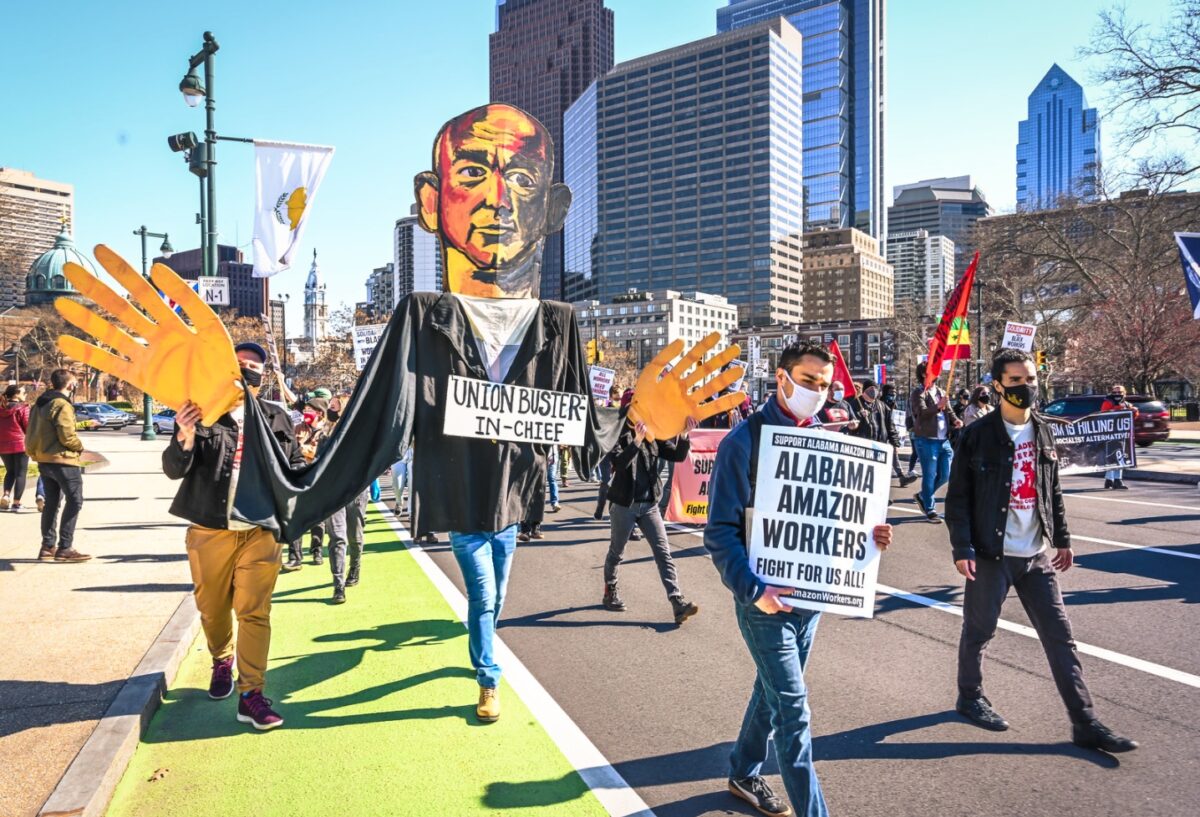By Ardian Shaholli
Right-to-work laws bar unions from requiring all workers covered by a union-negotiated contract from paying dues. In Abood v. Detroit Board of Education (1977), the U.S. Supreme Court codified the applicability of right-to-work laws to the public sector. It ruled that non-union employees must pay dues towards union activity that provides economic benefit – like collective bargaining. However, these dues cannot fund political activity. The court overturned this precedent in Janus v. AFSCME (2018), ruling that mandatory union dues for collective bargaining violate the first amendment. This decision had nationwide implications for public sector employees. Meanwhile, 28 states have right-to-work laws affecting private-sector workers.
While this justification is cloaked as a means to boost worker autonomy, it does the opposite. Higher wages and better benefits promote worker autonomy. Unions secure these outcomes. Declining unionization has contributed to 10-30% of the skyrocketing economic inequality experienced since the late 1970s. For every $1 union workers earn, their non-union counterparts make 81¢ – a $1,095 discrepancy per week. Luckily, the PRO, Protecting the Right to Organize Act significantly weakens right-to-work provisions.
Right-to-work Origins
In 1941, Dallas Morning News columnist William Ruggles wrote a piece calling for banning the closed shop, a labor agreement where the employer agrees to exclusively hire unionized employees.
This argument piqued the interest of corporate lobbyist Vance Muse. Muse established his lobbying bona fides by opposing the constitutional amendment prohibiting child labor, as well as railing against an 8-hour maximum work law for railroad workers, women’s suffrage, and the 1936 re-election of Franklin D. Roosevelt on the basis that the New Deal endangered the South’s racial caste system.
Muse approached Ruggles with the idea of going beyond the closed shop – pushing for right-to-work laws. Right-to-work would operate on the alleged premise that unions were harmful to workers – not their bosses. Ruggles gleefully approved of Muse’s suggestion.
Muse and his organization, the Christian American Association (CAA), attacked unions as a Jewish conspiracy to unite Black Southerners in a Marxist plot to overthrow white industrialists and planters in an effort to sovietize the United States.
Inflaming pre-existing racist, anti-semitic, and anti-communist sentiments are a potent triad for dismantling worker unity. These vicious CAA campaigns were funded by a coterie of wealthy planters and industrialists. Unsurprisingly, the broadsides predominantly targeted the Congress of Industrial Organizations – the largest union to accept members from a broad spectrum of crafts and skill sets.
Eventually, CAA’s campaigns resulted in Florida and Arkansas as the first pair of states to enact right-to-work legislation in 1944.
Wages & Employment
While gradually decoupled from their bigoted origins, right-to-work laws continue to hobble workers. They dismantle unions. If fewer and fewer workers pay dues, then a free-rider problem arises. Some workers will forego dues, placing a greater burden on their union counterparts. If the proportion of non-dues paying workers increases, then the union inevitably dissolves because of this contribution disparity.
Consequently, 5.2% of private-sector workers are union members in right-to-work states, compared to 10.2% in states without right-to-work laws. This has huge economic implications. Union membership is inextricably tied to higher wages. Unsurprisingly, the average worker in states without right-to-work laws earns $1,558 more annually than their colleagues in right-to-work states.
Of course, the benefits of unions extend beyond monetary gains. For example, if a worker wants to file a lawsuit over workplace misconduct, the union is required to provide an attorney free of charge, regardless of if the employee pays dues. While this service alleviates a worker’s financial burden and provides a feasible avenue for employer accountability, unions can only stretch themselves so thin until they are unable to cover expenses with limited resources.
You might expect some sort of economic tradeoff tied to this policy. Particularly regarding employment opportunities. However, there is no evidence linking right-to-work legislation to accelerated job growth. The states with both the lowest and highest unemployment rates have adopted right-to-work.
Additionally, an analysis of Oklahoma’s right-to-work experiment illustrates the law’s inadequacy in protecting or creating jobs in an industry notorious for providing good-paying jobs with solid benefits – manufacturing. In the decade prior to codifying right-to-work in 2001, the state added 22,000 manufacturing jobs. The decade after, it bled approximately 50,000.
PRO-Act
Institutional protections for unions are necessary to overcome deceptive tactics deployed by employers. Notably, Amazon launched a relentless intimidation campaign to quash unionization efforts in its Bessemer, Alabama warehouse. Tactics included texting workers daily anti-union propaganda, spying on workers, and threatening to discipline or fire those who refused to attend several weekly anti-union “workshops.”
The prevalence of right-to-work enables the abhorrent practices doled out by companies like Amazon. The PRO Act (which passed the House in March), would restructure labor-employer relations by significantly upending right-to-work and granting workers fairer and greater opportunities to unionize. Nearly half of non-union workers want the opportunity to join a union. However, only around 12% of the American labor force is unionized.
The PRO Act addresses major hurdles facing prospective union formation. First, the proposal bans employers from participating in union election procedure. Limiting this process between workers and the National Labor Relations Board prevents companies from meting out intimidation tactics like Amazon. It provides greater protections to striking workers. Employers would be prohibited from permanently replacing striking workers or locking them out as a retaliatory measure. Finally, it enables unions and private employers to broker fair share agreements. Under these agreements, fees are levied on all workers (union and non-union) that a union negotiates on behalf of. The fees cover the contract negotiation, administration, and grievance process. This ameliorates the free-rider problem at the core of right-to-work laws.
Ultimately, it should be no surprise that laws discriminatory in origin continue to exacerbate inequities today. The PRO Act would codify the right to safe, well-paid, and dignified work.

